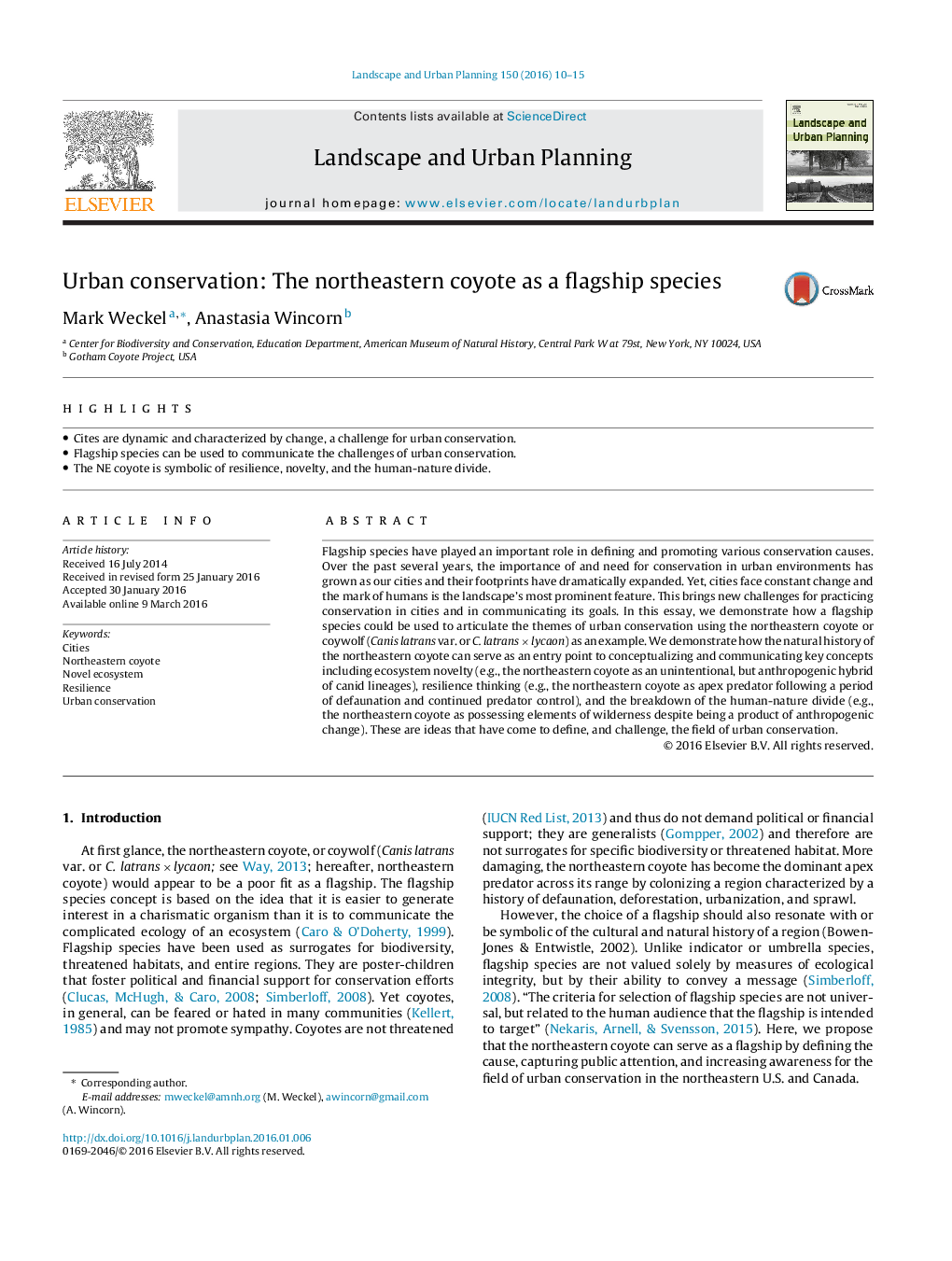| Article ID | Journal | Published Year | Pages | File Type |
|---|---|---|---|---|
| 1049100 | Landscape and Urban Planning | 2016 | 6 Pages |
•Cites are dynamic and characterized by change, a challenge for urban conservation.•Flagship species can be used to communicate the challenges of urban conservation.•The NE coyote is symbolic of resilience, novelty, and the human-nature divide.
Flagship species have played an important role in defining and promoting various conservation causes. Over the past several years, the importance of and need for conservation in urban environments has grown as our cities and their footprints have dramatically expanded. Yet, cities face constant change and the mark of humans is the landscape’s most prominent feature. This brings new challenges for practicing conservation in cities and in communicating its goals. In this essay, we demonstrate how a flagship species could be used to articulate the themes of urban conservation using the northeastern coyote or coywolf (Canis latrans var. or C. latrans × lycaon) as an example. We demonstrate how the natural history of the northeastern coyote can serve as an entry point to conceptualizing and communicating key concepts including ecosystem novelty (e.g., the northeastern coyote as an unintentional, but anthropogenic hybrid of canid lineages), resilience thinking (e.g., the northeastern coyote as apex predator following a period of defaunation and continued predator control), and the breakdown of the human-nature divide (e.g., the northeastern coyote as possessing elements of wilderness despite being a product of anthropogenic change). These are ideas that have come to define, and challenge, the field of urban conservation.
